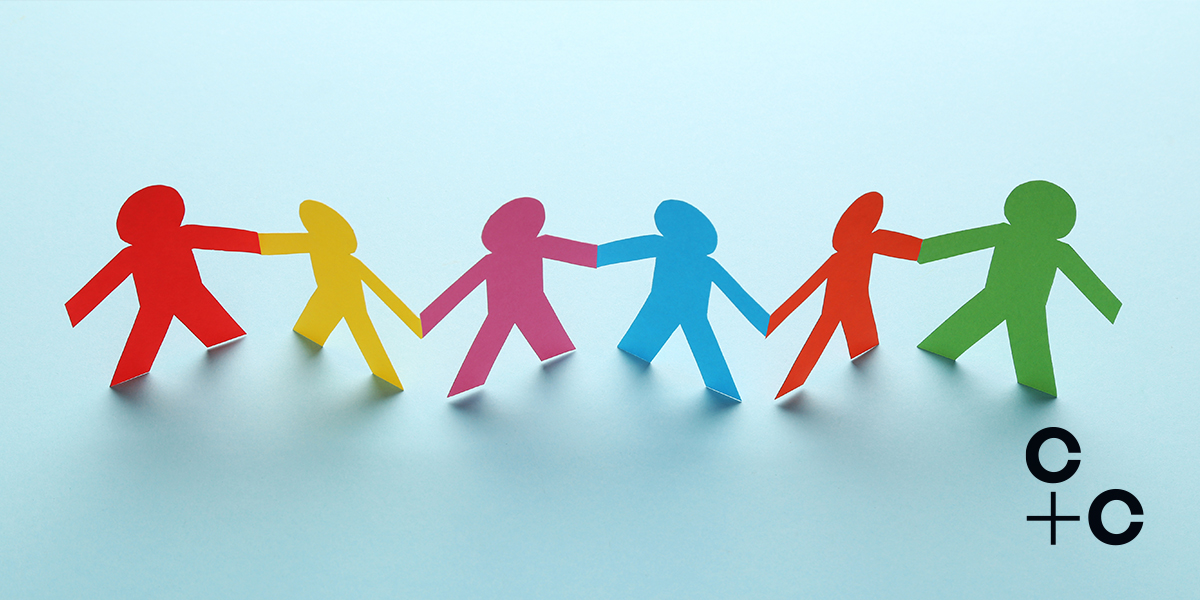
Improving employee experience with accessible technology
Global Accessibility Awareness Day (Thursday 19 May) is all about focusing the world on digital access and inclusion. Here, we take a look at accessible technology in the workplace and the commitments made by Microsoft and Content+Cloud.
Accessibility has always been an important consideration in the workplace, across all industries, but recent years have seen an increasing focus on accessible technology. In this era of digital transformation, where technology forms the basis of the tools we use for work, learning and everyday tasks, accessible technology is essential.
What is user accessibility?
Put simply, user accessibility means whether something can be accessed by people of all abilities, including people with disabilities. In today’s digital world, the possibilities for accessible products, services and opportunities are ever-increasing – but it doesn’t end there. There’s still a long way to go before the world we live in is truly accessible to all.
Accessibility is all about inclusion – accessible technology serves a diverse range of people. This includes people of varying levels of education and skill, geography and language, and even financial status.
Defining disability
According to the World Health Organization (WHO), disability is “a mismatch in interaction between the features of a person’s body and the features of the environment in which they live”. Each person with a disability will have different requirements of their technology, and fully accessible technology will accommodate the needs of all users. For example, one individual with a visual impairment may use a screen reader, whereas another may make use of the Magnifier tool.
Disabilities can present themselves in many different forms. Common categories of disability can include (but are not limited to):
- Physical – issues with mobility can prevent people from accessing products or spaces in the same way others do
- Cognitive – such as neurodiversity or learning disabilities where people require further assistance or alternative teaching methods
- Sensory – including visual and auditory impairments
- Illness – diseases and chronic illnesses can affect all areas of life
- Metal health conditions – conditions such as anxiety, depression or phobias can have a pervasive effect on people’s lives
Disability: the facts and figures
Over one billion people worldwide live with some form of disability. There are high numbers of unemployment rates for people with a disability – more than twice the number than those without. And for those who do work, only a tenth has access to the tools they need to do their work.
According to the WHO, almost everyone will experience some form of disability throughout their life – whether temporary or permanent. The number of people living with a disability is also continually increasing; it is predicted, for example, that 25% of people will have hearing problems by 2050. The need for accessibility in all areas of life will therefore continue to rise.
Increasing accessibility in the workplace
There are many ways to create an accessible workplace for your employees. This can include increasing accessibility and usability within your physical work or office space, such as installing lifts for people with limited mobility, or increasing the availability of braille for those with visual impairments.
But accessibility isn’t just about physical working spaces – it’s also about your digital workplace. Employees need the tools they use day in and day out (PCs, tablets, phones, etc) to be inclusive of all their needs, especially in hybrid working environments where staff take equipment home and work independently.
Harnessing accessible and assistive technology not only benefits your employees but your business as a whole. You’re empowering your staff with the tools they need to do their jobs efficiently.
Assistive tech: accessible technology for all
Products that increase the accessibility of tech are known as assistive technology (AT). There is a plethora of these accessible technology tools available in the form of products, apps and add-ons to assist people with impairments and disabilities.
The importance of AT cannot be underestimated. According to WIPO, individuals who receive the appropriate assistive technology right from childhood will, on average, have an increased income of $100,000 (or £81,700) throughout their lives.
Microsoft’s commitment to accessibility
Microsoft has a commitment to increasing accessibility across its business and is dedicated to decreasing the accessibility gap for those with disabilities.
In April 2021 it announced a number of accessibility features across Microsoft 365, including a background accessibility checker that works across the core Office apps. Microsoft also announced it would be ‘doubling down’ on making its workforce more diverse and to increasing accessibility within the workplace.
Microsoft accessibility features
Microsoft is continuously adding new accessibility features throughout its products as part of its commitment. Some key features in Microsoft 365 include:
- Immersive Reader in PowerPoint – a tool to increase readability in PowerPoint
- Dark Mode in Word – the ability to make the Word canvas black can help those with light sensitivity and can reduce eye strain
- PowerPoint Live in Microsoft Teams – viewers are able to access shared content using screen readers, refer back to previous slides and switch to high-contrast mode
- Microsoft Office Accessibility Checker – a tool to suggest edits that make your content more accessible
- Dictate in Microsoft 365 – use your voice to execute demands such as creating document or emails
- Designer – suggests design styles in Word to help polish your documents
Content+Cloud’s pledge
At Content+Cloud, we believe that technology should be inclusive; we’re committed to ensuring that tech is accessible to all. In April last year, following Microsoft’s commitment announcement, we set our team a target: to have 50% of our workforce complete the Microsoft Accessibility Fundamentals training. We were delighted to have hit and maintained this goal. We’re also extremely proud to be a leading Microsoft partner within this accessible technology initiative. This means we’re well placed to help your digital transformation accessible by design.
If you’d like to discuss how you can empower every member of your workforce with accessible technologies, why not book a call with Content+Cloud – we’d love to discuss how we can help you succeed.
Contact us to learn more about how we can help you improve user experiences with Microsoft 365.


